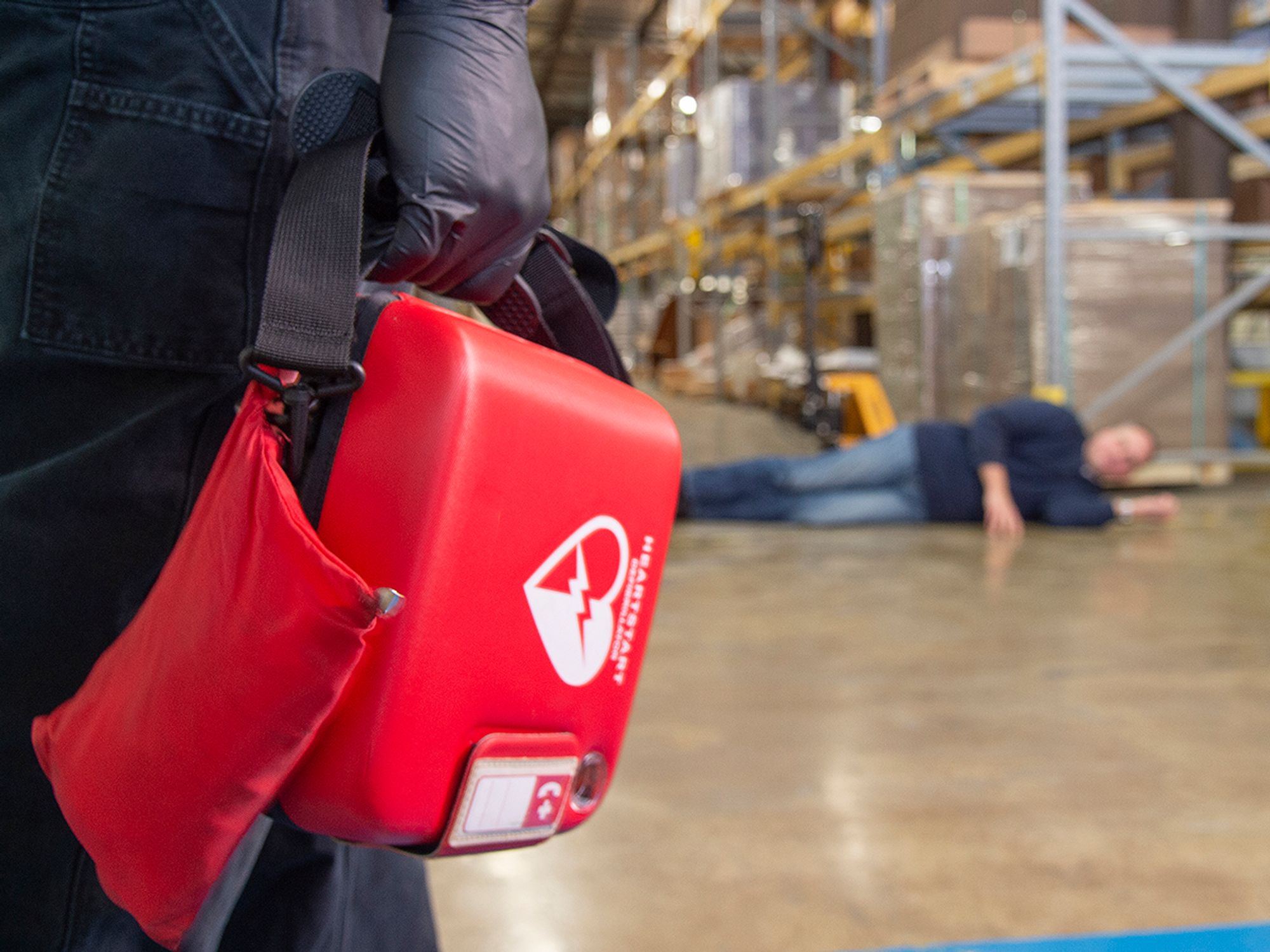Automated external defibrillators

- AED programs provide critical treatment for SCA events and using AEDs within 3-4 minutes can lead to a 60% survival rate among SCA victims.
- AEDs are not required by OSHA but are recommended and some state statutes require certain facilities to have AEDs at the workplace.
- Employers should consult a medical professional to determine whether an AED is warranted.
All worksites are potential candidates for automated external defibrillator (AED) programs because of the possibility of sudden cardiac arrest (SCA) and the need for timely defibrillation. AEDs provide the critical and necessary treatment for SCA caused by ventricular fibrillation, the uncoordinated beating of the heart leading to collapse and death. Using AEDs as soon as possible after sudden cardiac arrest, within 3-4 minutes, can lead to a 60% survival rate among victims of SCA.
AEDs are not required to be included in first-aid supplies; however, the Occupational Safety and Health Administration (OSHA) recommends employers consider the equipment as part of a medical and first-aid program. Each workplace must make a determination based upon its own requirements.
Do I need an AED in the workplace?
OSHA doesn’t require employers to have an automated external defibrillator (AED) on the premises. As such, employers should carefully evaluate whether an AED should be provided for use. Keep in mind that OSHA 1910.151(a) states, “The employer shall ensure the ready availability of medical personnel for advice and consultation on matters of plant health.” In this case, employers may wish to consult their medical professional on whether an AED is warranted.
AEDs are considered a medical device, therefore the Food and Drug Administration (FDA) may require a prescription to obtain them.
Do certain states have specific requirements for AEDs?
Some states require that certain facilities have AEDs. These facilities may include:
- Schools (public and private)
- State buildings
- Sports venues
- Gambling parlors
- Non-health facilities
State and local codes should be reviewed on a regular basis to keep current with the requirements.
